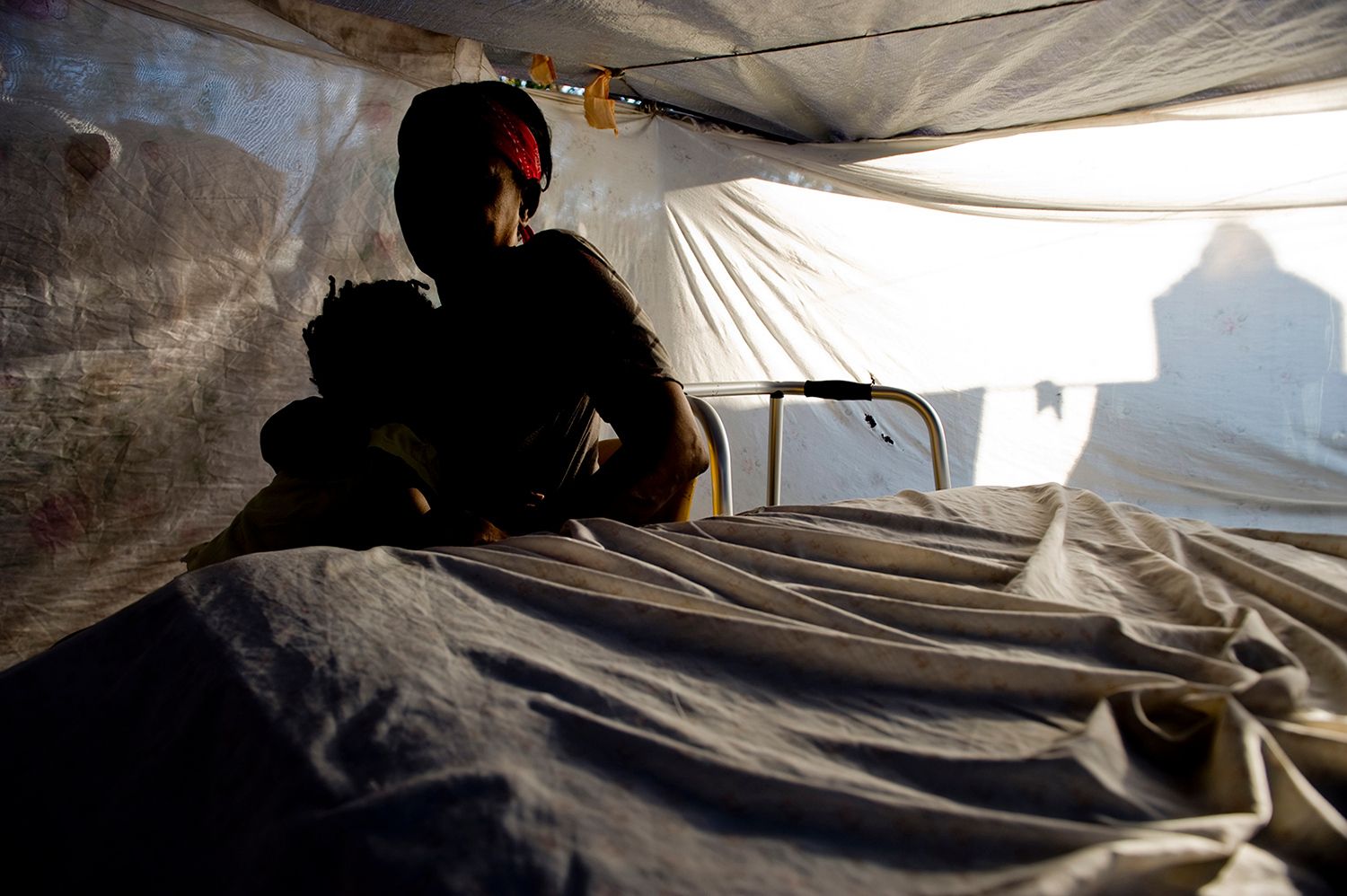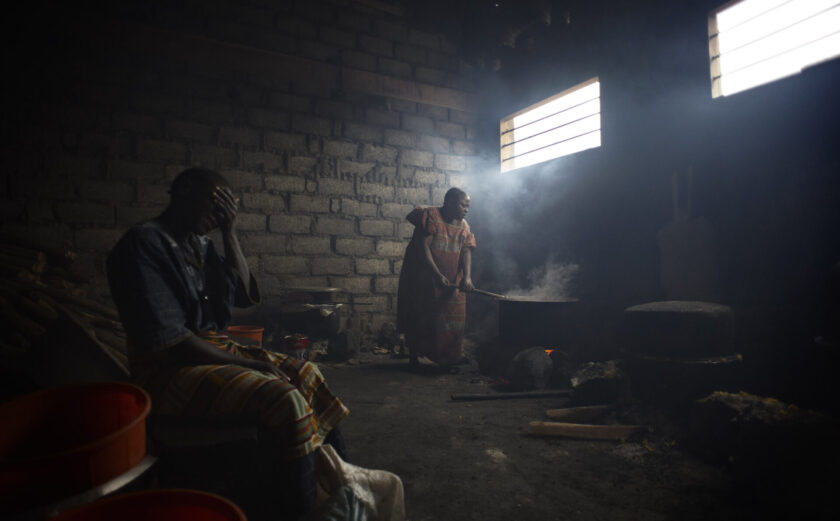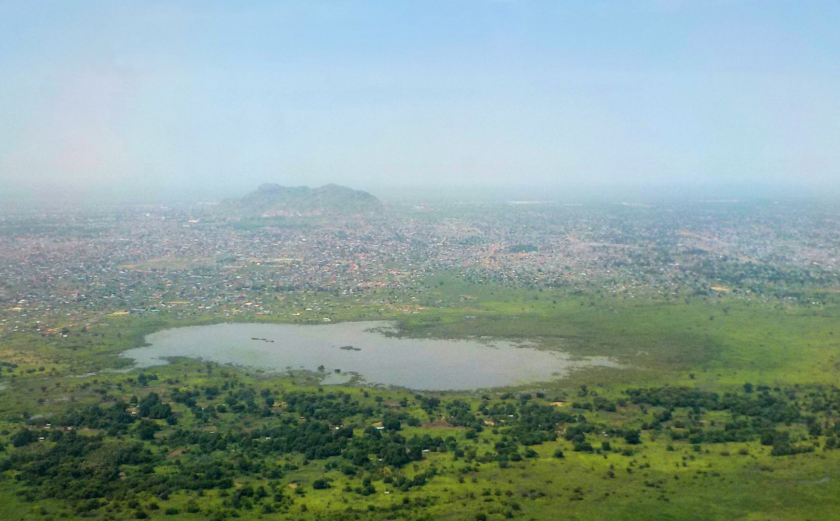
There’s a Lie You’ve Heard about Haiti
Part Three of the In The Dark Blog Series
There is one thing you quickly learn when researching anything about Haiti: the country is the poorest in the Western Hemisphere. Rarely does an article start its discussion on Haiti without first putting the country squarely in its place: last place.
If Haiti’s development needs are so well documented, why is it included here, in a series on “hidden” crises?
For one, this line is a lie. Haiti isn’t a “poor country.” It is a rich country that was robbed.
This might fly in the face of what you’ve likely read about Haiti, but the truth is evident in the historical record. Haiti was once the richest colony in the Americas. Though the enslaved people who produced this wealth received no compensation, French masters made fortunes from their labor. After Independence, Haiti’s people were forced to keep paying France until 1947, as compensation for the “assets” that the colonizer lost during the war. The modern equivalent of $21 billion was paid to France.
Just because the graft started early doesn’t mean it’s ancient history. In the twentieth century, 19 years of U.S. occupation of Haiti successfully manipulated governance to the benefit of American business interests, killing an estimated 15,000 Haitians through violent repression in the meantime. Instability and impunity for ruling parties would continue for decades under subsequent authoritarian leaders.
This is just a sliver of the many interventions, corrupt dealings, and uncountable instances of silent swindling that shaped the course of modern Haiti.
Acknowledging and integrating even the basics of this complex context creates room for nuance and agency in the conversation. On the other hand, mindlessly repeating shorthand catchphrases like, “Haiti is the poorest nation in the West” perpetuates negative stereotypes and highlights an outcome while ignoring the process responsible for creating that outcome—all the while enabling a vicious cycle of exploitation with impunity.
In other words, Haiti’s history and its key players have become hidden in the popular narrative. By looking back at this history, we see that today’s crises were a long time in the making.
Take, for example, the current issue of crisis-level food insecurity.
In the mid-twentieth century, Haiti was “food self-sufficient,” meaning it didn’t rely on imports to meet the population’s nutritional needs. Agricultural production made up half of Haiti’s GDP and was mostly based on small-scale farming ventures that, collectively, employed most of the country’s population. These farmers, and Haiti’s agricultural sector more generally, benefited from strong trade protections that helped insulate the economy from foreign competition.
Over time there were moderate reforms to open trade, but the major impetus for liberalization came in the 1990s after President Aristide was overthrown in a coup. Outraged and set on “peaceful settlement of the crisis in Haiti,” the U.N. Security Council instituted a general embargo on the country. The measure cut the island nation off from international trade, stymied its commercial sector, and set off a humanitarian crisis.
Eventually, President Artistride was reinstated, democracy returned, and once again, Haiti was told it must pay a debt for its freedom. With the post-embargo economy in shambles, the World Bank and U.S. President Clinton pushed Aristide to accept a structural adjustment plan that slashed tariffs protecting Haiti’s agricultural sector. Tariffs on rice and sugar dropped from 50% to 3%. Wheat duties dropped from 50% to zero. Meanwhile, the U.S. began subsidizing American farmers to take advantage of the newly opened market and export rice to Haiti.
It was quickly apparent that Haitian agriculturalists couldn’t compete with the imported products—at least not without significant investments that the government and international donors were not inclined to provide. Consequently, domestic agricultural production slumped, and farmers left the countryside to seek work in cities.
Today, Haiti imports half its food supply and 80% of its rice. Heavy reliance on imports put Haiti’s future in a precarious position.
According to the food security monitoring group FEWS NET, an estimated 40% to 60% of Haitians are food insecure. Though food items are readily available, deteriorating economic conditions like the depreciation of the gourde and the rise of inflation mean that foreign food has become too expensive for many Haitians to afford.
Despite decisionmakers who pushed bad policies on Haiti claiming regret—former President Clinton going so far as to claim “to live every day with the consequences”—the food insecurity crisis continues to grow.
Today, many Haitians cope with chronic hunger. Frena Remorin, 30, told Reuters that “No one has eaten yet today but if I feed my kids too early in the day they are hungry by night and cannot sleep.”
As Remorin observes, coping has its own consequences. For some, attempting to make a living means facing unsafe, or even deadly, working conditions in factories. Similarly, children are pulled away from their education to work. Some women facing hunger have turned to high-risk sex work. Even more appalling, international aid workers and U.N. peacekeepers have exploited these basic needs, trading their access to food and medicine for sex with Haitian women.
Failure to consider the dynamics which have contributed to Haiti’s food insecurity has helped exacerbate the problem.
Considering it was cheap foreign imports that drove Haiti’s agricultural woes, it isn’t too surprising that massive influxes of free food aid have stifled the agricultural production that remained in business. Some argue that this aid increased Haiti’s food import dependency in the long term.
In the end, despite the simplistic rhetoric surrounding Haiti, issues like the current food security crisis are dynamic, complex, and the result of decades of interconnected events—both within Haiti and beyond its shores.
We should expect that working to resolve the current issues today will likewise take considerable time. However, there are efforts—which you can take part in—underway.
If you are an InterAction Member, you can join our Haiti distribution list or contact Kathryn Sidlowski if you are interested in getting involved more directly.
More generally, you can learn more about Haiti from Haitians and the diaspora community. This helps counter tired stereotypes and paint a multidimensional picture of the country.
While the purpose of this article is to share information on misunderstood crises, other perhaps equally, “hidden” aspects of Haiti are those that don’t fit into the trope of poverty-ridden misery. Just because international press doesn’t cover it does not mean there is not celebration, art, music, and culture in Haiti. Learn about how to write about Haiti, catch up on hours of content covering history on YouTube, enjoy Haitian cuisine at a local spot, or try out a recipe if you can’t make it to a restaurant.
What these resources prove is that Haiti and her people have many stories to share. Stories that may just hold the answers to understanding Haiti’s present-day crises, as well as the keys to building a better future.









